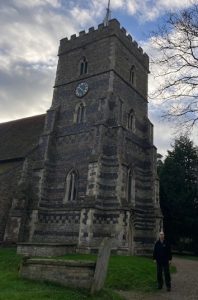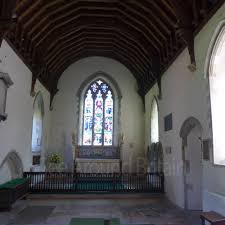
There are not many of these old style Jotul 602N Wood-Burning Stove these days although Jotul still manufacture them as an eco stove, the F602. I do see a few of these about with their characteristic crosshatched glass front, but I have only ever seen one with the compass type air control on the front door as in this example. Jotul have been making this stove model for an incredibly long time, with it first going into production in 1940. The customer told me that this particular stove has a long history and was in fact originally in his parents home in Bavaria Germany. He said that he had it shipped all the way from Germany then installed into his own house, where it is still going strong!
Jotul are a Norweigan company and have been making stoves and fireplaces for over 160 years. Jotul are proud of their global status, selling their products in 43 different countries spread over six continents – Truly a global brand!
Jøtul was founded by Oluf Onsum as Kværner Jernstøberi (Kværner Foundry) in the outskirts of Christiania (now Oslo) in 1853. While stoves initially were the main products, the company had diversified by the beginning of the 20th century, when it produced turbines and lumber equipment.
As the heating appliance manufacture decreased in importance, the production was spun off in 1916 and sold to Herman Anker, one of Kværner’s managers. He founded Jøtul AS in 1920 as a sales organization for its products. The sales stagnated during the depression in the 1920s, and 36-year-old Herman Anker died in 1927, leaving it to his successor, 34-year-old Johannes Gahr to modernize and eventually salvage the company. By 1935, the turnaround had succeeded, and the firm acquired its modern name.
By the 1960s, stoves using liquid fuels, especially kerosene had supplanted wood-burning appliances, a trend that was only reversed in the 1970s, partly due to the 1973 oil crisis. Jøtul used this opportunity to gain a strong international foothold and drastically increased its exports to continental Europe and North America.
The Gahr family sold the business to Norcem in 1977, and a period of international expansion began, as Jøtul acquired a number of foundries and importers abroad. This period lasted for approximately ten years, but came to an end during the recession in the late 1980s, when Jøtul once again focussed on the domestic market. However, it has resumed its international diversification in the 21st century, and today its products are sold worldwide.
In March 2018, Jøtul was acquired by the global private equity firm OpenGate Capital. Along with management, OpenGate has crafted a plan to boost performance and eliminate inefficiencies in Jøtul’s operations. In addition, OpenGate Capital is actively searching for add-on targets to further drive Jøtul’s growth. In November 2018, OpenGate and Jøtul completed the add-on acquisition of AICO, an Italian and French based pellet-burning stove leader.


 My name is Paddy McKeown, I am a retired police officer (Detective Sergeant – Metropolitan Police), turned chimney sweep. I have completed training with ‘The Guild of Master Chimney Sweeps’, and Rod Tech UK (Power Sweeping).
My name is Paddy McKeown, I am a retired police officer (Detective Sergeant – Metropolitan Police), turned chimney sweep. I have completed training with ‘The Guild of Master Chimney Sweeps’, and Rod Tech UK (Power Sweeping).
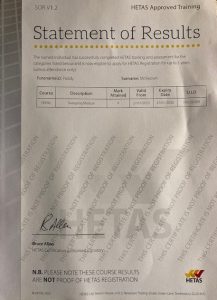

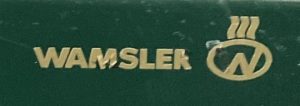





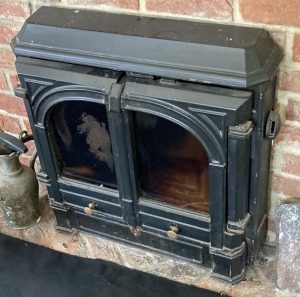 I sweep many, many of the old Parkray multi-fuel room heaters across the area, particularly in the old Braintree District council houses that I sweep for Eastlight Community Homes. We have been working our contract with Eastlight Community Homes for over 5 years now and it involves over 200 sweeps annually, many of which are Parkray Multi-Fuel Room Heaters. However, I have not come across one of these, a double-door Parkray. I therefore thought that as it was so unusual, it would make an interesting blog. The vast majority of the Parkrays I sweep have the classic single door look, although if you look back through my blogs, you will see a couple of examples of Bronze coloured Art Deco examples.
I sweep many, many of the old Parkray multi-fuel room heaters across the area, particularly in the old Braintree District council houses that I sweep for Eastlight Community Homes. We have been working our contract with Eastlight Community Homes for over 5 years now and it involves over 200 sweeps annually, many of which are Parkray Multi-Fuel Room Heaters. However, I have not come across one of these, a double-door Parkray. I therefore thought that as it was so unusual, it would make an interesting blog. The vast majority of the Parkrays I sweep have the classic single door look, although if you look back through my blogs, you will see a couple of examples of Bronze coloured Art Deco examples.
 Here is a salutary tale from Thaxted this week about the need to have a chimney regularly swept – A barn conversion caught fire and lost most of its roof when soot deposits in the chimney caught fire and spread to the loft space. The soot had apparently collected in the top part of the chimney as the chimney had not been swept for some time. People don’t realise that if a chimney catches fire and the have not had it swept annually by a reputable trades person and they therefore have not been issued with an annual Safety Certificate, then the insurance company is unlikely to pay out for any damage caused.
Here is a salutary tale from Thaxted this week about the need to have a chimney regularly swept – A barn conversion caught fire and lost most of its roof when soot deposits in the chimney caught fire and spread to the loft space. The soot had apparently collected in the top part of the chimney as the chimney had not been swept for some time. People don’t realise that if a chimney catches fire and the have not had it swept annually by a reputable trades person and they therefore have not been issued with an annual Safety Certificate, then the insurance company is unlikely to pay out for any damage caused.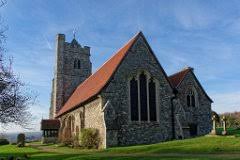
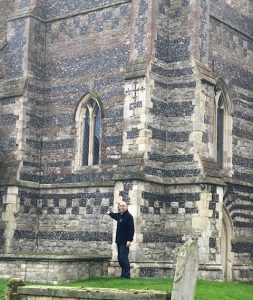 In the churchyard there is a memorial to murdered policeman Sergeant Eves – Acting Sergeant 63 Adam Eves was posted to Purleigh in January 1891 where he lived in a cottage with his wife Elizabeth. He was popular with his residents although of course he made a number of enemies amongst the criminal classes and had been threatened with violence often in the course of his duties. Sergeant Eves was on night patrol on Saturday 15 April 1893 after which he failed to return home. During the afternoon of the following day his body was discovered in a ditch at nearby Hazeleigh Hall Farm. His body was badly mutilated, and his throat had been slashed. While Detectives investigated the murder of Sergeant Eves other Officers were investigating the theft of 13 bushels of corn from a nearby barn. Enquiries took police to the home of a local petty criminals, Richard and John Davis. There they found a handcart which contained traces of blood and corn. Three further sacks of corn were found in their garden. Charles Sales and John Batemen who were friends of the Davis brothers were also arrested. Clothes from Sales, Batemen and Richard Davis were all found to be stained with blood. Further arrests of James Ramsey and his son John were made shortly afterwards.
In the churchyard there is a memorial to murdered policeman Sergeant Eves – Acting Sergeant 63 Adam Eves was posted to Purleigh in January 1891 where he lived in a cottage with his wife Elizabeth. He was popular with his residents although of course he made a number of enemies amongst the criminal classes and had been threatened with violence often in the course of his duties. Sergeant Eves was on night patrol on Saturday 15 April 1893 after which he failed to return home. During the afternoon of the following day his body was discovered in a ditch at nearby Hazeleigh Hall Farm. His body was badly mutilated, and his throat had been slashed. While Detectives investigated the murder of Sergeant Eves other Officers were investigating the theft of 13 bushels of corn from a nearby barn. Enquiries took police to the home of a local petty criminals, Richard and John Davis. There they found a handcart which contained traces of blood and corn. Three further sacks of corn were found in their garden. Charles Sales and John Batemen who were friends of the Davis brothers were also arrested. Clothes from Sales, Batemen and Richard Davis were all found to be stained with blood. Further arrests of James Ramsey and his son John were made shortly afterwards.